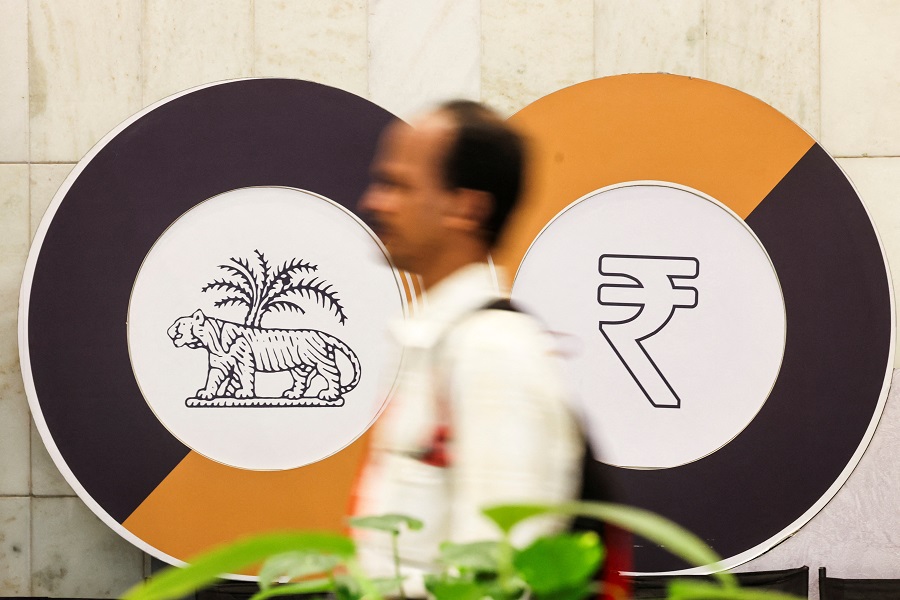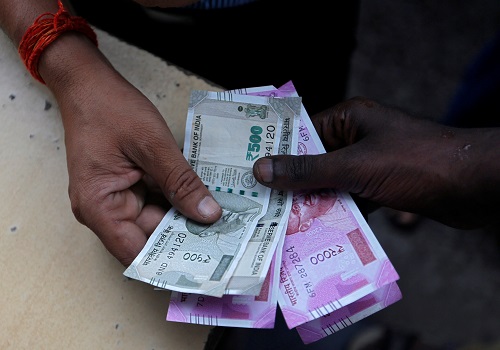Prices stays above the support of 6000 levels - Geojit Financial Services

Follow us Now on Telegram ! Get daily 10 - 12 important updates on Business, Finance and Investment. Join our Telegram Channel
TECHNICAL COMMENTARY
If prices stays above the support of 6000 levels, trend is likely to be firm. Moreover any rise above 6520 could see upside moves towards 6900/7120 levels. Moreover, weekly RSI (14) is treading higher supporting the view. However, intermittent profit booking cannot be ruled out before resuming next wave of upside moves and any fall below 6000 could negate the current upside momentum.
FUNDAMENTAL HIGHLIGHTS
In its December report, the US Department of Agriculture has estimated global soybean production in 2021-22 at 381.8 mln tn, marginally lower than 384 mln tn pegged the previous month. The decline is mainly attributed to a fall in production in China due to lower area under the oilseed, though the output in Russia and the Ukraine is seen higher. The estimate for global ending stocks for 2021-22 has been scaled down to 102.0 mln tn from 103.8 mln tn the previous month. In the December report, the global soyoil export estimate for 2021-22 has been increased marginally to 12.7 mln tn from 12.6 mln tn estimated the previous month. However, the global soyoil production estimate for 2021-22 has been revised downwards to 61.6 mln tn in December from 61.7 mln tn pegged the previous month. According to the report, global oilseed production in 2021-22 is seen lower at 627.6 mln tn against 628.0 mln tn pegged in November, due to a decline in soybean output in China. Global vegetable oil output in 2021-22 is now seen at nearly 215.0 mln tn, against the estimate of 214.8 mln tn in November.
India's oilmeal exports fell 50.6% on year to 157,467 tn in October, according to data released by The Solvent Extractors' Association of India. In AprOct, overall exports of oilmeal were at 1.43 mln tn, down 11.5% on year. Soymeal exports fell drastically to 14,538 tn in October compared with 120,290 tn in the same period last year because the Indian variant is priced higher in international markets. In October, mustard meal exports fell about 48% on year to 52,875 tn.
India's vegetable oil imports in October fell 16.3% on year to 1.0 mln tn, the Solvent Extractors' Association of India said. India's vegetable oil imports in 2020-21 (Nov-Oct) at 13.5 mln tn is the lowest in the last six years, it said. Edible oil imports were at 1.0 mln tn in October against 1.2 mln tn a year ago, while for Nov-Oct, they decreased marginally to 13.1 mln tn from 13.2 mln tn a year ago. Imports of refined edible oils rose to 686,000 tn in 2020-21 against 421,000 tn last year while crude edible oil imports fell marginally to 12.4 mln tn from 12.8 mln tn last year. As on Nov 1, 565,000 tn of edible oil was at ports, against 558,000 tn from a year ago, while 1.14 mln tn in the pipeline against 1.0 mln tn during same period last year.
India's soymeal exports fell sharply in October to 30,000 tn from 135,000 tn in the same month last year, according to data from The Soybean Processors Association of India. The data showed soymeal production at 479,000 tn, against 758,000 tn a year ago. Farmers, traders, and mills were left with 10.5 mln tn of soybean stock by the end of October. The association said soybean arrivals in markets were at 1.5 mln tn in October, against 1.8 mln tn in the same month last year. A total of 600,000 tn of soybean was crushed in October, compared with 950,000 tn in October 2020, the data showed. The decline is likely because of a drop in arrivals of the oilseed in domestic markets.
FUNDAMENTAL COMMENTARY
The Jan NCDEX Soybean prices fell due to decline in domestic demand in the spot market. Moreover, fears over new variant of COVID-19 virus triggered selloffs in the entire oilseed segment in the previous week. Expectation of pick up in demand for soybean from poultry industry limited major fall. However, rise in acreage of oil seed, especially RMseed and fall in demand for edible oils as festival demand and rise in supply in to the markets are the key factors to watch in. In the international front, U.S CBOT soybean prices traded higher on shortage of global production of soybean. The decline is mainly due to fall in production in China due to lower area. Moreover, shortage of canola crop due to drought in Canada supported the prices of soybean. Lower global ending stocks also supporting the prices in the near term.

RMSEED FUNDAMENTAL HIGHLIGHTS
Farmers in the country sowed the commodity across 8.2 mln ha as of Dec 10, up 23.8% on year, in the ongoing 2021-22 (Jul-Jun) rabi season. The government fixed the minimum support price of the crop at 5,050 rupees per 100 kg for the 2022-23 (Apr-Mar) marketing season, as against 4,650 rupees in the previous year.
The Centre cut basic duty on crude palm oil, crude soybean oil and crude sunflower oil from 2.5% to nil The agricess on these oils has been brought down from 20% to 7.5% for crude palm oil and 5% for crude soybean oil and crude sunflower oil, the Finance Ministry said. The basic duty on RBD Palmolein Oil, Refined Soybean and Refined Sunflower Oil has been slashed to 17.5% from the current 32.5%.
The Securities and Exchange Board of India has asked the National Commodity and Derivatives Exchange Ltd not to launch new futures contracts of mustard seed till further notice.
The government has imposed stockholding limits on all edible oils and oilseeds till Mar 31, according to an official notification.
Production of canola in Canada is estimated to hit a 10-year low of 15.0 mln tn in 2021-22 (Aug-Jul), down nearly 20% on year, a report by Agriculture and Agri-Food Canada said. Export of canola is expected to be nearly 36% lower on year at 7.0 mln tn in the 2021-22 crop year.
The government aims to produce 17.40% more mustard crop on year at 12.24 mln tn in 2021-22 (Jul-Jun) rabi season by encouraging farmers to bring more area under the crop, according to Farm Ministry Joint Secretary.
India's 2020-21 (Jul-Jun) mustard output is seen rising to 22.6% on year to 8.95 mln tn, according to a joint survey by the Central Organisation for Oil Industry and Trade and the Mustard Oil Producers' Association. Government estimated that mustard output during 2020-21 at 10.4 mln tn, against 9.1 mln tn a year ago. India's 2020-21 (JulJun) mustard acreage was up by 6.7% on year at 7.3 mln ha as of 18th Jan., according to farm ministry data.
The government has banned the blending of mustard oil with multi-source edible vegetable oils and prohibited its sales from July 1, according to a notification by the Food Safety and Standards Authority of India.
India is likely to produce around 10 mln tn of mustard in 2020-21 (Jul-Jun), up by 35% from a year ago due to higher acreage and favourable weather conditions, according to the Solvent Extractors' Association of India.
India's 2020-21 (Jul-Jun) mustard output is seen rising 22.6% on year to 8.95 mln tn, according to a joint survey by the Central Organisation for Oil Industry and Trade and the Mustard Oil Producers' Association.

To Read Complete Report & Disclaimer Click Here
For More Geojit Financial Services Ltd Disclaimer https://www.geojit.com/disclaimer
SEBI Registration Number: INH200000345
Views express by all participants are for information & academic purpose only. Kindly read disclaimer before referring below views. Click Here For Disclaimer












 320-x-100_uti_gold.jpg" alt="Advertisement">
320-x-100_uti_gold.jpg" alt="Advertisement">











